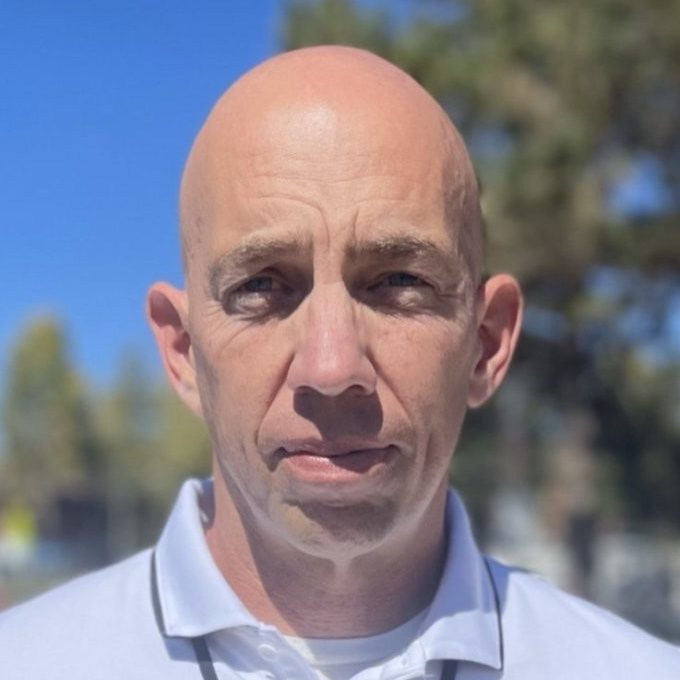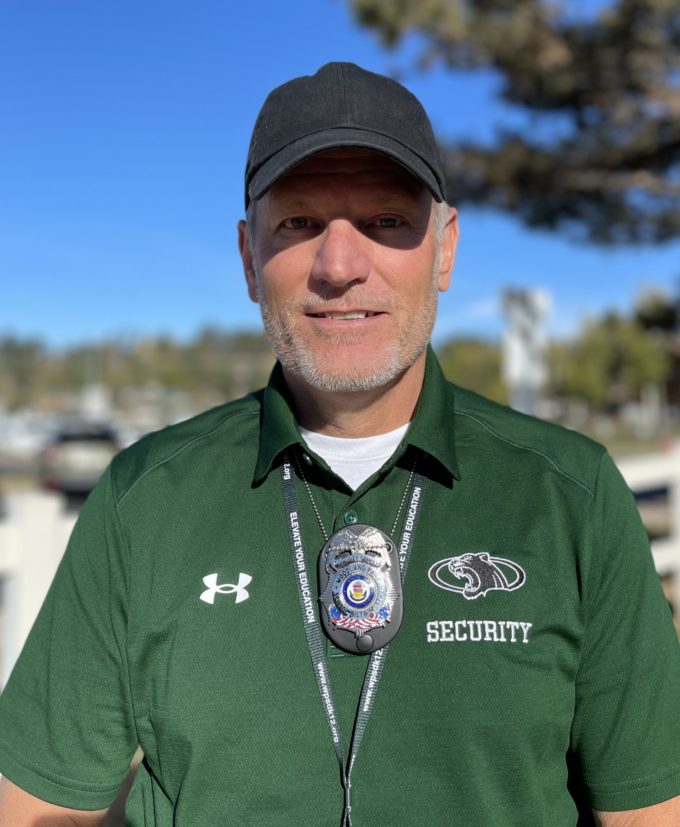Tim Petruna, our Safety and Security Director, brings over two decades of military experience, demonstrating exceptional leadership in fast-paced environments and a track record of protecting assets. His expertise in overseeing emergency operations, improving organizational procedures, and fostering a culture of safety is essential to upholding a secure environment within our school district.
Safety & Security
Meet our Safety and Security Team

Tim Petruna

Travis McCarthy
Travis McCarthy, a District Armed Security Guard with 33 years of law enforcement and security experience, is a valuable addition to our district. His extensive expertise in campus security, training coordination, and law enforcement roles demonstrates his dedication to ensuring the safety of our school community, making him an integral part of our safety and security team.
Safe 2 Tell
Safe 2 Tell: Click here to anonymously report anything that concerns or threatens you, your friends, your family, or your community.
Our students and staff's safety and security are our top priority at WPSD. A Safety and Security Coordinator and campus monitors are shared across the district to keep our schools as safe as possible.
Standard Response Protocol
IN CASE OF SCHOOL CRISIS
Grades PreK-12
What to expect in the event of a school emergency or crisis situation.
Please understand staff may not be able to answer phones during a crisis situation.
The ability to pick up your child(ren) during a crisis may be limited due to emergency vehicles and/or safety reasons.
Standard Response Protocol
Our schools practice various emergency drills throughout the year so students and staff members know how to respond during an incident.
According to the SRP, five specific actions can be performed during an incident. These actions are outlined below.

HOLD in classroom or area.
Hold
Used when the hallways need to be kept clear of people.
The following are some examples of when a school might initiate a Hold:
• An altercation in a hallway;
• A medical issue that needs attention;
• Unfinished maintenance operation in a common
area during class changes.

SECURE. Get inside. Lock outside doors.
Secure
Used to safeguard students and staff within the building.
The following are some examples of when a school or emergency dispatch might call for a Secure Action.
• An unknown or unauthorized person on the grounds
• Dangerous animal on or near the grounds
• Criminal activity in the area
• Planned police activity in the neighborhood

LOCKDOWN
Lockdown
Used to secure individual rooms and keep students quiet and in place.
The following are a few examples of when a school or emergency dispatch might call for a Lockdown.
• Dangerous animal within a school building
• Intruder
• An angry or violent parent or student
• Report of a weapon
• Active assailant

EVACUATE to a location.
Evacuate
Used to move students and staff from one location to a different location in or out of the building.
The following are a few examples of when a school or
emergency dispatch might call for an Evacuation.
• Power outage
• Gas leak
• Threat
• Violent events on campus

SHELTER. State Hazard and Safety Strategy.
SHELTER
Always followed by the hazard and a safety strategy and is the protocol for group and self-protection.
Hazards might include:
• Tornado
• Hazmat
• Earthquake
• Tsunami
Safety Strategies might include:
• Evacuate to a shelter area
• Seal the room
• Drop, cover and hold
• Get to high ground
More Information
Standard Response Protocol (SRP) Parent Handout
SRP (English)
SRP (Spanish)
SRP (Portuguese)
SRP (Somali)
Notification: As soon as possible, the following notification systems will be utilized by WPSD:
WPSD's social media and website
Auto-Dial Message System to include voicemail, email, and texts
Local radio and TV stations
To receive emergency and non-emergency alerts, you must enroll at PeakAlerts.org or call 719-785-1971.
Each school has its own plan that revolves around four components: Response, Recovery, Mitigation, and Preparation. Every year, the crisis response plans are reviewed and updated as necessary.
